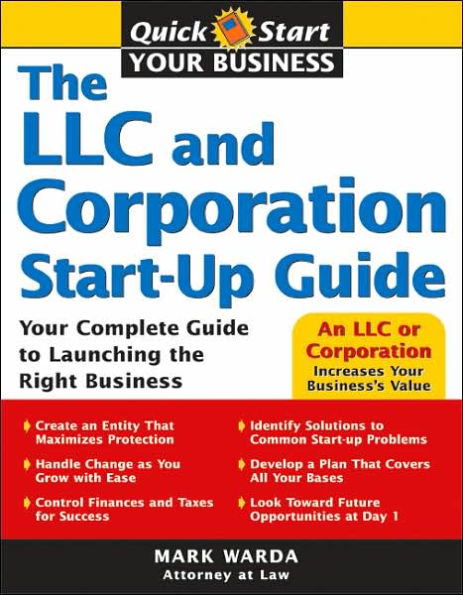Table of Contents
INTRODUCTION
Section I: LLCs
CHAPTER 1: What a Limited Liability Company Is
- Common Terms
- Figure 1.1: LLC Terms Compared with Corporations
CHAPTER 2: Advantages and Disadvantages of an LLC
- Compared to Proprietorships and Partnerships
- Figure 2.1: Advantages of an LLC
- Compared to Limited Partnerships
- Compared to Corporations
- Figure 2.2: Other Advantages of an LLC over a Corporation
- When to Use a Single-Member Company
- Converting an Existing Business
- Figure 2.3: Double Asset Protection
- Figure 2.4: Business Comparison Chart
CHAPTER 3: Types of LLCs
- Domestic LLC or Foreign LLC
- Membership Controlled or Management Controlled
- LLC or PLLC
- Figure 3.1: Additional Rules that May Apply to Professional LLCs
- Single-Member or Multiple-Member
CHAPTER 4: Start-Up Procedures
- Choosing the Company Name
- Figure 4.1: Trademark Records Search
- Figure 4.2: Forbidden Names
- Fictitious or Assumed Names
- State LLC Laws and Forms
- Articles of Organization
- Execution and Filing
- Figure 4.3: Additional Forms
- Publication
- Membership or Management Agreement
- Figure 4.4: Membership Operations Agreement
- Figure 4.5: Management Operating Agreement
- Capitalization
- Tax Forms
- Employees
- Bank Accounts
- Licenses
- Figure 4.6: Checklist for Forming an LLC
CHAPTER 5: Membership Interest in an LLC
- Capital Structure
- Payment for Membership Interests
- Securities Laws
- Federal Exemptions from Securities Laws
- State Securities Laws
- Internet Stock Sales
- Payment for Membership Interests
- Figure 5.1: State Securities Registration Offices
CHAPTER 6: Running and LLC
- Day-to-Day Activities
- Member Meetings
- Figure 6.1: Records
- Annual Reports
Section II: Corporations
CHAPTER 7: What a Corporation Is
CHAPTER 8: Advantages and Disadvantages of a Corporation
- Advantages
- Figure 8.1: Advantages to Incorporating
- Figure 8.2: Disadvantages to Incorporations
CHAPTER 9: Types of Corporations
- Domestic Corporation or Foreign Corporation
- S Corporation or C Corporation
- Professional Corporations
- Nonprofit Corporations
CHAPTER 10: Start-Up Procedures
- Name Search
- Figure 10.1: Firms that Conduct Trademark Searches
- Figure 10.2: Firms that Conduct Trademark Searches
- Articles of Incorporation
- Shareholder Agreement
- Figure 10.3: Shareholder Agreement
- Organizational Paperwork
- Tax Forms
- Figure 10.4: Bylaws
- Corporate Supplies
- Figure 10.5: Firms that Conduct Trademark Searches
- Figure 10.6: Stock Certificate
- Organizational Meeting
- Figure 10.7: Initial Meeting Agenda
- Minute Book
- Bank Account
- Licenses
- Figure 10.8: Checklist for Forming a Simple Corporation
CHAPTER 11: Shareholder Interest in a Corporation
- Securities Laws
- Federal Exemptions from Securities Laws
- State Securities Laws
- Figure 11.1: State Securities Registration Offices
- Internet Stock Sales
- Payment for Shares
CHAPTER 12: Running a Corporation
- Day-to-Day Activities
- Corporate Records
- Annual Meetings
- Annual Report
GLOSSARY
APPENDIX A: Addresses and Special
APPENDIX B: Forms
INDEX



